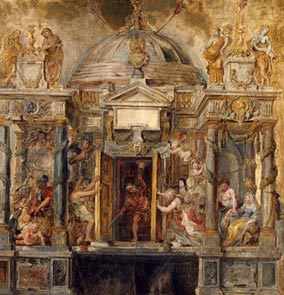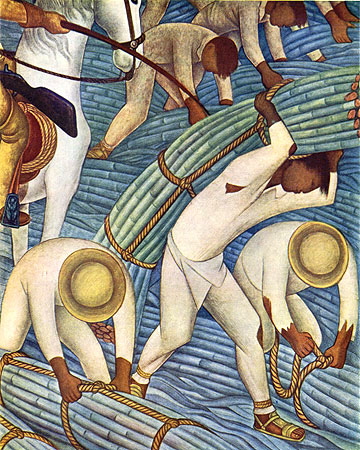drawn from antiquity or works
Mannerism
 Pontormo Jacopo. Meeting of Mary and Elizabeth Mannerism (Italian. Manierismo – pretentiousness, mannerism from maniera – method, method) – the name conventionally denoting stylistic trends, as well as a certain stage in the development of European, mainly Italian, art of the middle and late 16th century. This stage reflected the crisis of the artistic ideals of the Italian Renaissance. The art of Mannerism as a whole is characterized by the primacy of form over content. Exquisite technique, virtuosity of manner, demonstration of skill does not correspond to the paucity of design, secondary nature and imitation of ideas. In Mannerism there is fatigue of style, the exhaustion of its vital sources. Continue reading
Pontormo Jacopo. Meeting of Mary and Elizabeth Mannerism (Italian. Manierismo – pretentiousness, mannerism from maniera – method, method) – the name conventionally denoting stylistic trends, as well as a certain stage in the development of European, mainly Italian, art of the middle and late 16th century. This stage reflected the crisis of the artistic ideals of the Italian Renaissance. The art of Mannerism as a whole is characterized by the primacy of form over content. Exquisite technique, virtuosity of manner, demonstration of skill does not correspond to the paucity of design, secondary nature and imitation of ideas. In Mannerism there is fatigue of style, the exhaustion of its vital sources. Continue reading
Baroque
 Baroque – (Portuguese. Baroco – freaky, bad, wrong, spoiled). The term “baroque” has many meanings in the history of art. Among them are narrower, to indicate artistic styles in the art of various countries of the XVII-XVIII centuries, or broader ones – to define the ever-renewing tendencies of restless, romantic attitudes, thinking in expressive, dynamic forms, or generally as a poetic metaphor: “Baroque man” , “Baroque”, “Baroque world”, “Baroque life”. Finally, in every time, almost every historical art style finds its “baroque period”. Continue reading
Baroque – (Portuguese. Baroco – freaky, bad, wrong, spoiled). The term “baroque” has many meanings in the history of art. Among them are narrower, to indicate artistic styles in the art of various countries of the XVII-XVIII centuries, or broader ones – to define the ever-renewing tendencies of restless, romantic attitudes, thinking in expressive, dynamic forms, or generally as a poetic metaphor: “Baroque man” , “Baroque”, “Baroque world”, “Baroque life”. Finally, in every time, almost every historical art style finds its “baroque period”. Continue reading
Ernest Seton-Thompson – writer, artist, naturalist
 Eighty-six years of life – a considerable time. Exactly so many wonderful Canadian writer, artist, naturalist Ernest Seton-Thompson lived. But who was he in the first place? A rare case – it happily combined all three professions.
Eighty-six years of life – a considerable time. Exactly so many wonderful Canadian writer, artist, naturalist Ernest Seton-Thompson lived. But who was he in the first place? A rare case – it happily combined all three professions.
Seton-Thompson was born in England in 1860, from childhood he dreamed of becoming a naturalist. However, the parents had other plans for this. Naturalist … “Is this a profession?” – Father argued. Continue reading


